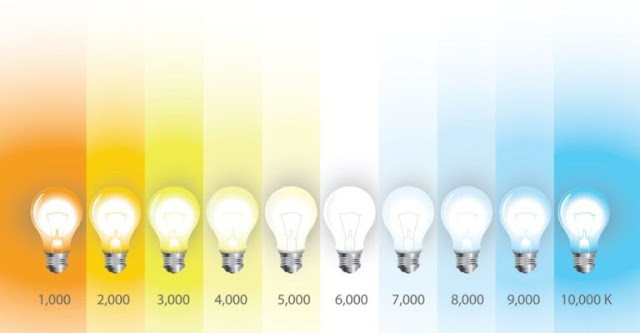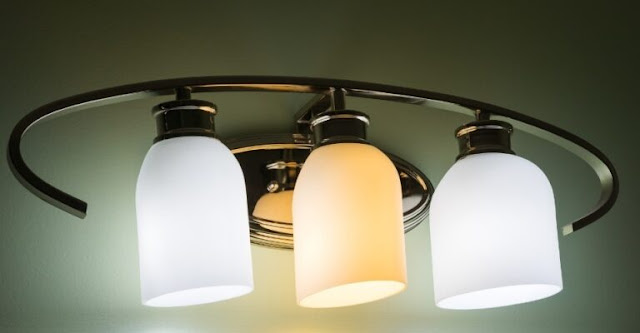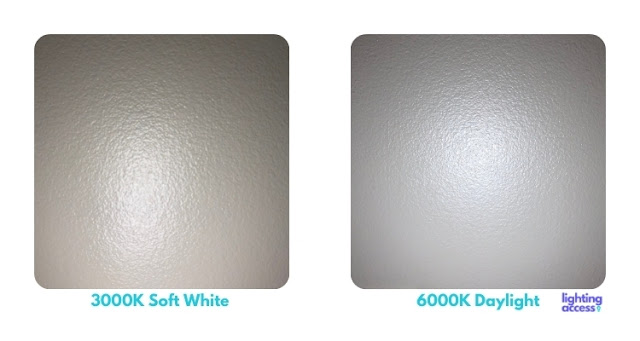Soft white and daylight have different effects when illuminating an object or space.
One option is to choose between 2700K (which produces a warmer tone) versus 6000-7000k (cooler). Another way these terms may be defined would be as warm vs. cool; there's also another term for them: Cool White vs. Warm bravery, similar yet opposite ends of the spectrum.
Kelvin is a temperature scale that goes from 1,000K to 10'000 K. The lower the number means more yellow tones, while higher numbers have bluish tints.
A common misconception about color photography and monitors is how they represent colors, but actually, this has nothing to do with warmth or coolness; instead, what happens when we look at things in terms of kelvin space (or black-and-white). If you were thinking - hey, I know somebody who would love hearing these types of stories, then please feel free to send them over!
- Soft White = 2700K-3000K
- Daylight = 5500K-6500K
Soft White vs Daylight
Soft White vs daylight - what's the difference?
Soft White has more warm tones and often falls within the yellow color range. Daylight, on the other hand, while still having some oranges in it due to its coolness level; this type also contains many whites as well blueish hues making them perfect for commercial areas where cleanliness is key instead than dirtiness which would make soft lights look unprofessional or dirty compared with how pristinely clear they can seem when used outside (daylight).
Soft White is ideal for:
- Residential
- Kitchen
- Bedrooms
- Bathrooms
- Closets
- Under Cabinets
Daylight is ideal for:
- Commercial
- Garages
- Display Cases
- Offices
- Signage
When trying to decide on the right light for your bathroom, it is important that you take into consideration what color cast or tone of voice will be most appropriate. For example, if I wanted an earthy complexion with highlights wood grains, then using a softer white such as 3k-5k would work well while maintaining coolness since this range has been recommended by some experts in design because they believe people prefer them over blueish 6000K lights found typically at commercial settings where traffic flows more smoothly.
Things to keep in mind:
- Cabinetry color
- Countertop color
- Paint color
- Size of the room
- Existing natural light
The difference between 3000K and 6000K lights is clear. One brings a lot more "brightness," while the other makes for a much softer-looking light in your bathroom vanity mirror! A 4000k color might be perfect if you want an even balance between illumination and cosmetic appeal on this type of surface (such as taupe).
Soft White or Daylight for Kitchens
The right light can make all the difference in your kitchen. A soft white or warmer color will highlight wood grains and look great on earthy tones, but if you want a more contemporary feel for yours, then go with cool-white fixtures that are around 4000K - 5000k, where it's usually less harsh than daylight (which has an orange tint).
Instead, you can use a soft white or meet in the middle with a cool white.
You may be surprised to know that your cabinet color can affect the tone of light you choose for cooking. Even if all of your kitchen walls are white, look for a cool- rather than daylight -type light because this will make them appear more natural and give off fewer harsh shadows on what's inside the cupboards!
Soft White or Daylight for Bedrooms
Bedrooms should be a place to relax and unwind, not have their mood dramatically changed by the lighting. The soft white light or even yellowish is preferred for bedrooms as it can help create an inviting atmosphere in your bedroom without being too bright like daylight would make things feel.
Daylight has always been seen by many people who live on our planet Earth - both awake and asleep –to just simply be harsh compared with other colors such as blues, which often result in headaches.
I took some photos of my floor lamp with different types and styles, including an incandescent bulb for comparison. You can really tell the difference when you remove its cover-the yellow light is more dispersed in a softer white while blues get brighter sunlight from daylight bulbs!
Soft White Lights
The soft white color of a 2700-3000K light bulb is perfect for residential applications. This tone will work in more settings than daylight does, and it's also warmer, which makes the room feel friendlier without being overbearing like harsh lights can sometimes do!
You can get soft white lights in lots of fixtures like:
- LED Light Bulbs
- Incandescent Bulbs
- LED Strip Lights
- Outdoor String Lights
- Recessed Ceiling Lights
- Puck and Stick Lights
There are a wide variety of popular light styles to choose from when shopping for fixtures. For example, you can find many different types that offer smart bulbs which work with your home's Wi-Fi network, so they automatically change color depending on what time it is or how bright it feels inside!
You can get daylight fixtures in:
- LED Light Bulbs
- LED Strip Lights
- Ceiling Lights
- Incandescent Bulbs
- Puck Lights
- Stick Lights
Whether you want to warm up your winter home or cool down the summertime outdoors, there are many ways of doing so with lights. For example, if it's getting hot in your living room during those long days and nights when everyone else is sleeping while they can (and should) enjoy their own bedrooms, then consider using white light as opposed to natural sunlight through window panes for ambient illumination—this will make them feel more comfortable because we all-.





Below post is about soft white vs daylight white, let's quickly look at how some people call the light color for different color temperature.
ReplyDelete